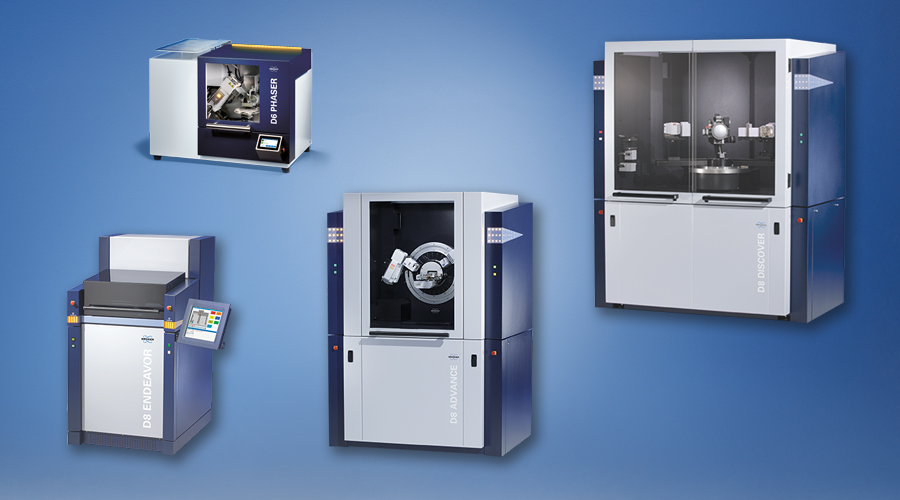

DIFFRAC.LEPTOS X
Performance Meets Ease-of-Use
High-Resolution X-ray Diffraction (HRXRD) and X-ray Reflectivity (XRR) are non-destructive analysis techniques essential for the characterization of new materials in research and development, as well as for quality and process control in the mass production of electronic devices. Both methods probe the sub-nanometer scale with high accuracy, evaluating parameters such as layer thickness, solid solution concentrations, surface roughness, crystallographic lattice relaxation, lattice strain and stress, mass density, and other physical properties.
DIFFRAC.LEPTOS X, Bruker’s next-generation thin film analysis software, provides functionality for the analysis of XRR and HRXRD measurements from thin film samples, including loading and pre-processing of 1D scans and reciprocal space maps (RSMs), as well as the reduction of RSMs to 1D scans for further in-depth analysis. The software combines flexibility and accuracy with user-friendly workflows, making it suitable for both beginners and experts.
Main features
- Quick thickness estimation via Fast Fourier Transform.
- Detailed analysis of XRR and HRXRD data through sample-model based fitting using dynamical scattering theory.
- Flexible formula-based parameter and free fitting variable modeling.
- Comprehensive and extendable databases for materials and samples.
- Advanced automation and workflow capabilities including macro-recording and the WorkflowDesigner with drag-and-drop functionality.
- Automated analysis and display of measurement series.
- Customizable contour plots and statistical analysis of wafer mapping data.
- Powerful and extensive report generator with template capability.
Instant XRR analysis using FFT analysis
When the analysis task consists in extracting a layer thickness, then DIFFRAC.LEPTOS X sets the benchmark: With a single mouse-click, the Estimate tool evaluates the layer thicknesses via a Fast Fourier Transform and directly adds the result into the corresponding graph of the XRR measurement.
Extensive Reciprocal Space map capabilities
DIFFRAC.LEPTOS X offers extensive capabilities for displaying and processing Reciprocal Space Maps (RSMs). RSMs can be visualized in angular or q-space, with intensities on linear or logarithmic scales. Multiple maps can be merged or cropped as needed, and 1D scans can be extracted along predefined or arbitrary directions for in-depth analysis.
Comprehensive material database
DIFFRAC.LEPTOS X features a comprehensive and extendable material database for amorphous and crystalline materials as well as mixed crystals up to quaternary compounds. The database offers calculation of structure factors or hkl patterns. To facilitate the creation of new database entries, .cif files and .str files can be directly imported.
Sample model definition with unparalleled flexibility
From simple single layer samples to highly complex samples containing superlattices and gradients - DIFFRAC.LEPTOS X masters them all. Various interfacial roughness models allow a more precise description of the different growth morphologies. The linking of layer parameters and additional free variables set new standards in the flexibility of sample modelling.
Sample database for faster and more efficient work
DIFFRAC.LEPTOS X comes with a powerful sample database: Complex samples structures can be created, stored, and then directly loaded into the current analysis project. The common use of the sample database with the measurement software DIFFRAC.SUITE allows for a more efficient planning of the experiments also increasing the efficiency in daily routine work.
Efficient and accurate analysis of XRR measurements
DIFFRAC.LEPTOS X applies the well-established Parratt algorithm for the accurate simulation of XRR curves. Experimental contributions like wavelength, instrumental resolution, intensity scaling, background as well as beam and sample size are integrated to accurately describe the measurements.
Efficient and accurate analysis of HRXRR measurements
DIFFRAC.LEPTOS X’s HRXRD module is dedicated to the detailed analysis high-resolution XRD data taken in various scattering geometries from samples with pseudomorphic, partly relaxed and fully relaxed epitaxial layers.
Ultra fast analysis of superlattices
For the ultra-fast analysis of XRR and HRXRD measurements from superlattices, DIFFRAC.LEPTOS X features the Method of Eigenwaves (MEV). This advanced computational method significantly accelerates the data simulation and enables to rapidly obtain highly accurate results through least-squares data fitting using dynamical scattering theory.
Non-ambient thin film studies
Frequently, XRD measurements are performed with the sample under changing conditions like temperature or stress, for example.
DIFFRAC.LEPTOS X enables the easy and fast analysis of such data series: each refined parameter of the sample model can be evaluated individually as a function of the condition. Additionally, the statistical analysis can provide maximum insight into the sample’s properties and behavior.
Detailed wafer analysis
DIFFRAC.LEPTOS X offers comprehensive wafer analysis capabilities. Workflows can be applied to analyze data at each measurement position on the wafer, and the refined sample parameters can be visualized as contour plots.
The obtained results are displayed as histograms, and statistical values such as minimum, maximum, average, and standard deviation are available.
Automation
With DIFFRAC.LEPTOS X, analysis of XRR and HRXRD data has become easier than ever before:
- Workflow Recorder: Easily capture workflows with this tool. Each action taken is recorded and can be saved for later reuse at any time.
- Workflow Designer: Create or customize workflows intuitively. Commands can be added via drag- and-drop, and their parameters can be adapted as needed.
From importing measurement data to reporting results, DIFFRAC.LEPTOS X offers intuitive user guidance and automation.
Executing workflows
DIFFRAC.LEPTOS X offers two different implementations to execute workflows:
- Console Mode: This mode allows workflows to be launched by an external program, enabling integration into fully automated thin-film analysis solutions.
- Workflow Runner: This mode provides step-by-step and step-back execution of workflows for maximum control and user interaction. Parameters of individual commands can be adjusted, and steps can be re-executed to ensure optimal performance.
Unrivalled reporting capabilities
DIFFRAC.LEPTOS X includes a professional printing and reporting system for the creation of reporting- or publication-ready graphics and full analysis reports. The reports can be printed directly, shared as .pdf files, or further edited as .docx files.
Creating report templates
DIFFRAC.LEPTOS X allows the user to create his own report templates from scratch or to customize existing ones. Predefined graphics and variables can be combined with standard word processing elements and provide the required flexibility for designing high quality reports.

